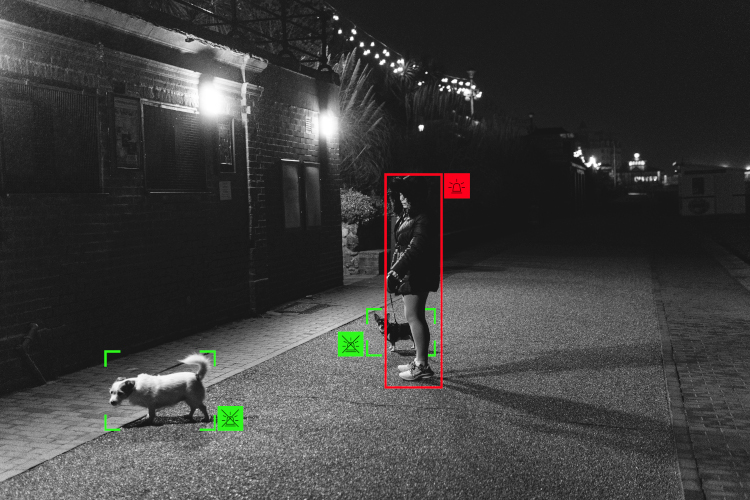Video analytics in perimeter protection: Classical motion detection or AI-based object classification?
How to balance the strengths and weaknesses of both methods for effective perimeter protection.

A key success factor for effective perimeter protection is video verification. Integrating video management into the alarm processing workflow provides reliable, real-time visual verification of alarm messages. Based on the visualization of the situation, operators can immediately initiate appropriate measures - from addressing the perpetrator via 2-way audio transmission to dispatching emergency staff to the scene, equipped with all necessary information.
The video management system itself can also function as alarm system - with the help of video analytics. In this process, the relevant video streams are permanently analyzed to detect critical situations directly in the images. There are essentially two approaches to this: traditional motion detection and object classification using artificial intelligence (AI).
Classical motion detectors analyze contrast changes in the image and compare these to a reference "normal situation". This enables the systems to detect moving objects as well as their basic properties such as size, direction of movement and speed. The mathematical methods used require comparatively little computational effort for efficient real-time alerting. However, such systems are susceptible to nuisance alarms, "false positives", caused by light reflections for example or by irrelevant objects such as small animals or spiders in front of the lens.
Thanks to massive increases in image processing performance of hardware platforms, algorithms based on artificial intelligence (AI) are becoming affordable on a large scale. So-called "neural networks" are trained to understand image content. The training is based on real-world video sequences. The resulting algorithms are able to classify moving objects using categories, such as persons, vehicles, animals or other influences. However, such systems can be manipulated, for example by an intruder slipping a simple cardboard box over himself, thus not being recognized as a person. AI-based methods also require significantly more computing power for real-time alerting than classical motion detection, which is why often not every image of a video stream are analyzed. In the worst case, both effects can lead to unreported dangerous situations - "false negatives".
An effective alternative that balances these pros and cons is the combination of both methods, as in the Perimeter+ system from Geutebrück. The technology, called G-Fusion, combines the strengths of classic video motion detection with those of AI-based analysis. First, a pre-analysis of the video streams is performed using classical motion detection. This reliably and efficiently detects significant image changes in real time. Then, a specially trained AI classifies detected moving objects, thus reducing nuisance alarms caused by light reflections or uninteresting objects. The AI used is specifically developed for perimeter protection and therefore accounts for possible manipulation attempts.
The results speak for themselves: the solution enables reliable near real-time alerting, minimizing the hardware requirements for image processing compared to a pure AI-based solution, and reduces the false alarm rate by up to 90 percent compared to traditional video motion detectors. This results in significant cost savings for the initial investment as well as during system operation and for alarm processing. It also massively increases the user confidence in the system’s reliability and thus the overall security. The optimal combination of established methods with AI-based technologies opens a groundbreaking perspective for advanced perimeter protection.
Interested readers can find more detailed information here.












